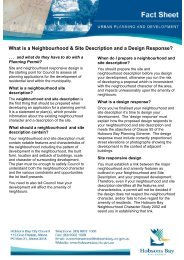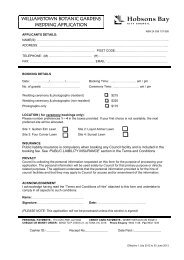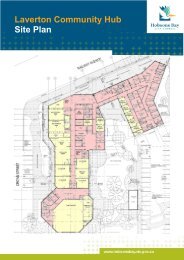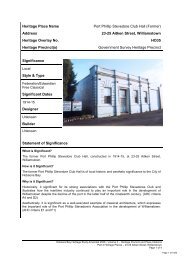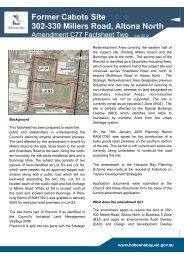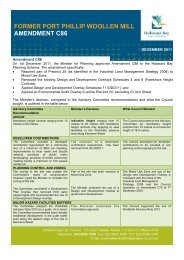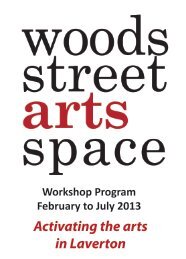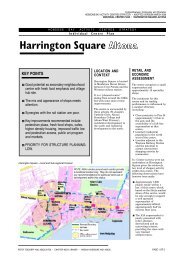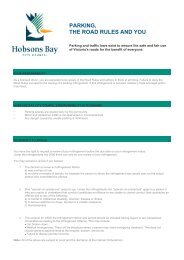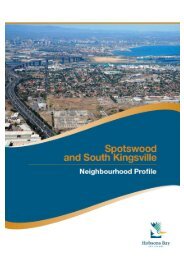Williamstown Profile - History & Development - Hobsons Bay
Williamstown Profile - History & Development - Hobsons Bay
Williamstown Profile - History & Development - Hobsons Bay
You also want an ePaper? Increase the reach of your titles
YUMPU automatically turns print PDFs into web optimized ePapers that Google loves.
<strong>Williamstown</strong>’s Botanic Gardens were one<br />
of the earliest to be established in Victoria.<br />
The gardens were designed by Edward La<br />
Trobe and some elements of the original<br />
1860 plan are still evident. Changes in the<br />
early part of the twentieth century saw the<br />
addition of an ornamental lake, palm<br />
avenue (see photo) and new gates at the<br />
north-east corner.<br />
Towards the end of the nineteenth century, <strong>Williamstown</strong> was being promoted as a health<br />
resort and the beach area adjacent to the Botanic Gardens was particularly popular. The<br />
<strong>Williamstown</strong> Baths were built in 1888, at the current site of the kiosk, and hot sea baths were<br />
added in 1902 (later destroyed by a storm in 1934). In the early 1900s, the promenade and<br />
bluestone wall were built along the foreshore. The dressing pavilion (now a restaurant), and life<br />
saving clubrooms were added in the 1930s.<br />
Shipbuilding was also at the forefront of activity in <strong>Williamstown</strong>.<br />
In the early 1900s, activity around the port area continued with the Commonwealth<br />
Government commissioning a number of ships to replace those lost during WW I.<br />
Having sold the dockyards to the Melbourne Harbour Trust in the 1920s, the<br />
Commonwealth then bought them back in order to meet the shipbuilding requirements<br />
as a result of WW II. 11<br />
More recent developments<br />
<strong>Williamstown</strong>’s maritime connections are still apparent<br />
today, including the naval dockyards which are<br />
located at the eastern tip of the neighbourhood. Until<br />
1986, the dockyards were under the control of the<br />
Commonwealth government but have since had<br />
several owners and<br />
are now owned by BAE. The dockyards play an<br />
important strategic role as a military shipbuilder and<br />
are one of the city’s largest employers. Apart from the<br />
dockyards, boating activity, particularly around Nelson<br />
Place, is oriented towards recreational boating and<br />
associated industries.<br />
<strong>Williamstown</strong>’s history is evident in its heritage buildings and streetscapes although some of<br />
that history has been lost, as buildings were demolished to make way for new development. In<br />
the 1950s, the historic Langhorne bluestone wool store in Nelson Place was demolished by the<br />
former Housing Commission of Victoria. The Nelson Heights high rise flats were constructed<br />
on the site in the late 1960s to ease the chronic housing shortage in Melbourne. A second<br />
housing block (Floyd Lodge) was also developed in Hanmer Street.<br />
<strong>Williamstown</strong> Neighbourhood <strong>Profile</strong> 8



